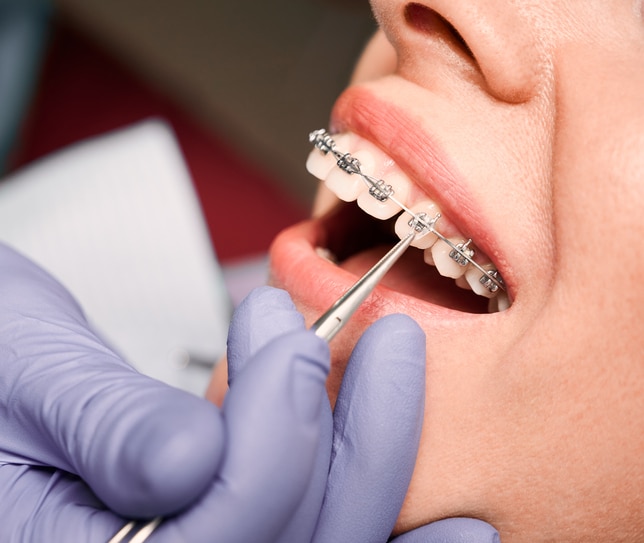How Cumming Orthodontics Addresses Common Braces and Invisalign Concerns
Comprehensive Overview to Orthodontics Treatments for Fixing Oral Imbalances
Recognizing the details of each treatment, including their devices, benefits, and prospective disadvantages, is important in making notified decisions about one's orthodontic therapy. As we navigate through the comprehensive guide to orthodontic treatments for remedying dental misalignments, the detailed information of each technique will unfold, losing light on the path toward a practical and unified oral placement.
Orthodontic Procedures Summary

Regular modifications and monitoring are vital components of orthodontic therapy to make sure progression is on track and to make any type of necessary alterations along the method. By undergoing orthodontic treatments, patients can not just achieve a straighter grin but likewise boost their general oral health and function.
Typical Dental Braces: Just How They Work
When considering orthodontic therapies for oral imbalances, typical dental braces stand out as a time-tested technique for dealing with teeth placing. Traditional dental braces are composed of braces, wires, and bands that work together to use continual pressure on the teeth, slowly relocating them right into the preferred alignment. The braces are affixed to the teeth making use of a special adhesive, and the wires are threaded with the brackets. By adjusting the tension of the cables, orthodontists can control the instructions and force applied to each tooth, directing them right into proper placement in time.
As pressure is used to the teeth via the dental braces, the bone surrounding the teeth is improved to sustain the brand-new tooth placements. Clients will need routine changes at the orthodontist's office to make sure the dental braces proceed to use the right stress for efficient teeth movement.
Undetectable Aligners: Disadvantages and pros
These clear, customized trays are practically invisible when put on, making them an attractive alternative for people looking for an extra visually pleasing orthodontic therapy. Individuals can remove the aligners prior to eating or brushing their teeth, reducing the threat of food getting stuck in the device and simplifying the cleansing process.

Surgical Orthodontic Options
Surgical treatments in orthodontics present feasible alternatives for resolving intricate oral imbalances that might not be successfully solved with traditional orthodontic therapies. While unnoticeable aligners and conventional braces can deal with lots of orthodontic problems, specific cases require medical intervention to attain ideal results. Surgical orthodontic options are usually recommended for severe malocclusions, substantial jaw disparities, and situations where the underlying bone structure needs adjustment to achieve correct positioning.
One typical surgical orthodontic treatment is orthognathic surgical treatment, which involves repositioning the jaws to correct practical concerns such as problem speaking or chewing. This surgical treatment is frequently performed in cooperation with an orthodontist who aids line up the teeth prior to and after the procedure. Surgical orthodontics might likewise entail procedures to reveal affected teeth, remove excess gum cells, or reshape the jawbone to develop an extra unified face profile.
Before thinking about medical orthodontic alternatives, individuals undergo a thorough examination to determine the requirement and possible benefits of such interventions. orthodontist. While surgical procedure may seem daunting, it can dramatically improve both the function and aesthetics of the smile in cases where traditional orthodontic therapies fail
Retainers and Post-Treatment Care

Failure to comply with post-treatment care guidelines can result in regression, where the teeth progressively relocate back towards their original placements. Regular retainer wear, excellent dental hygiene, and routine dental check-ups are important for maintaining the outcomes accomplished through orthodontic surgery and ensuring the lasting security of the remedied dental alignment.
Conclusion
To conclude, orthodontic procedures provide various options for correcting oral misalignments. Conventional dental braces make use of steel braces and wires to move teeth into correct placement. Unnoticeable aligners offer a more discreet option however might not appropriate for all cases. Surgical orthodontic alternatives are offered for more extreme misalignments. Retainers are generally utilized post-treatment to maintain online dentist the brand-new alignment. Generally, orthodontic procedures can properly enhance oral health and wellness and aesthetic look.
As we browse via the comprehensive overview to orthodontic procedures for remedying oral misalignments, the complex details of each approach will unfold, dropping light on the course toward a harmonious and practical oral positioning. - orthodontist
One of the most typical orthodontic therapies is the usage of dental braces, which consist of metal brackets and cables that apply gentle pressure to slowly change teeth right into the desired placement.When thinking about orthodontic therapies for oral imbalances, traditional braces stand out as a tried and true approach for dealing with teeth positioning. In addition, unnoticeable aligners might not be appropriate for intricate orthodontic concerns that call for even more substantial teeth movement, as they are normally advised for light to modest instances. Retainers are custom-made orthodontic devices designed to hold teeth in their corrected positions after the conclusion of orthodontic therapy.